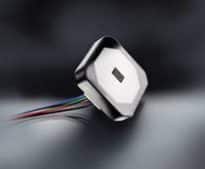Responding to increasing criticism, Secretary of Defense William Perry issued a memorandum in 1994 that effectively eliminated the use of most defense standards. This has become known as the “Perry memo”. Many defense standards were canceled. In their place, the DOD encouraged the use of industry standards for quality assurance. MIL-STD-464 was developed as an “Interface … [Read more...]
Using An Oscilloscope To Verify EMC Tests For Automotive Electronics
Consumer demand for more entertainment, safety, and communication options within automobiles has significantly increased both the density of electronic components and the number of on-board wired and wireless signals. The result: an ever-expanding range of signals contained within the same car-sized fixed space. USING AN OSCILLOSCOPE TO VERIFY EMC TESTS FOR AUTOMOTIVE … [Read more...]
Basic EMC Concepts
Introduction Understanding EMC is all about two important concepts: (1) all currents flow in loops and (2) high frequency signals are propagated as electromagnetic waves in transmission lines. Currents Flow in Loops These two concepts are closely related and coupled to one another. The problem we circuit designers miss is defining the return path back to the source. If you … [Read more...]
Techniques For Mitigating Intrapair Skew-Induced EMI With Shielded Connectors
Introduction EMI stands for electromagnetic interference. There are several methods of EMI transmission from the source to the victim. Two of them are radiated EMI and conducted EMI. Radiated EMI happens when an electrical device produces an RF signal that is picked up and causes unwanted effects. Conducted EMI is unintentional energy carried out of the source via signal … [Read more...]
A Short Perspective On Our Industry: IoT, Wireless & Security
Introduction The term “The Internet of Things” is a concept that went from a novel (like Bitcoin or Streaming or something similar) to a phrase that is as household as a Spying Siri or an Alert Alexa. Way back, when I was a green engineer, the nominal upper frequency for testing PCs and the like was 1 GHz. System clocks ticked along at a blistering 25 MHz. Jump a generation … [Read more...]
Fundamental Oscilloscope Probes
As electronics have become more advanced, so has the equipment used to measure their signal behavior and system performance. In the realm of EMC compliance, oscilloscopes are one of the important tools used to measure signals, hunt down noise sources, and identify time-domain measurements that may contribute to radiated or conducted emissions. Without a properly selected probe, … [Read more...]
Radiated Emissions Testing
INTRODUCTION Radiated emissions testing is only one part of emissions testing. CISPR 32, the document that lays out limits and methods of measurement for emissions (radiated and conducted) for Information Technology Equipment (ITE), broadcast receivers and multimedia equipment is 120 pages in length. ANSI C63.4 deals with only the testing part (limits are contained in a … [Read more...]
New Touchless Hidden Switch is Concealed Behind Surface
Santa Rosa, California, August 10th, 2023 – SCHURTER introduces the innovative THS switch series with optical sensor technology that can be concealed behind any surface without the need for mounting holes. A small opening in the user interface is all that is needed to allow the ToF sensor to actuate. Equipment and appliances used in public areas has created demand for … [Read more...]
New FXP Fuseholder with Increased Power Ratings Already Fulfills Upcoming IEC Standard
Santa Rosa, California, June 8th, 2023 – SCHURTER, a leading provider of electronic components, is proud to announce its new FXP fuseholder with increased power ratings. The closed fuseholder provides a solution to a longstanding industry challenge that involves power dissipation limitations for fuseholders used at higher operating currents and temperatures. SCHURTER’s new FXP … [Read more...]
Summary of Military and Aerospace EMC Tests
INTRODUCTION Military and aerospace EMC tests cover a wide range of products. While the standards, including limits and test methods may differ, all EMC test standards have a few things in common. The most basic are the limits for emissions and the types and levels of susceptibility testing. Emissions tests (and their associated limits) are put in place for military and … [Read more...]
- « Previous Page
- 1
- 2
- 3
- 4
- 5
- …
- 69
- Next Page »













